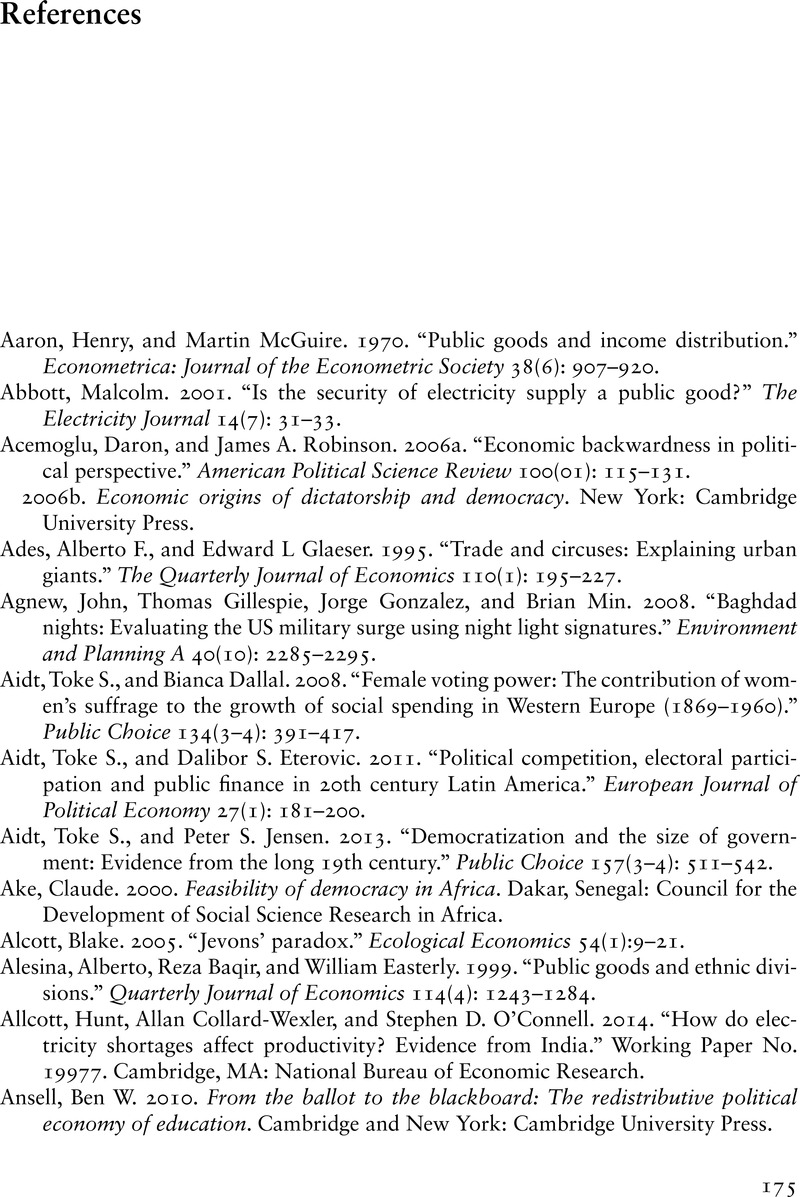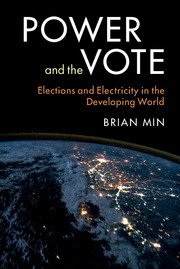Book contents
- Frontmatter
- Dedication
- Contents
- List of Figures
- List of Tables
- Acknowledgments
- 1 Introduction
- 2 Public Goods, Elections, and the Poor
- 3 Power and the State
- 4 Measuring Electricity from Space
- 5 Democracy and Light
- 6 Lighting the Poor
- 7 Electrifying India
- 8 Conclusion
- Appendix Satellite-Derived Estimates of Electrification
- References
- Index
- References
References
Published online by Cambridge University Press: 05 November 2015
- Frontmatter
- Dedication
- Contents
- List of Figures
- List of Tables
- Acknowledgments
- 1 Introduction
- 2 Public Goods, Elections, and the Poor
- 3 Power and the State
- 4 Measuring Electricity from Space
- 5 Democracy and Light
- 6 Lighting the Poor
- 7 Electrifying India
- 8 Conclusion
- Appendix Satellite-Derived Estimates of Electrification
- References
- Index
- References
Summary

- Type
- Chapter
- Information
- Power and the VoteElections and Electricity in the Developing World, pp. 175 - 190Publisher: Cambridge University PressPrint publication year: 2015



